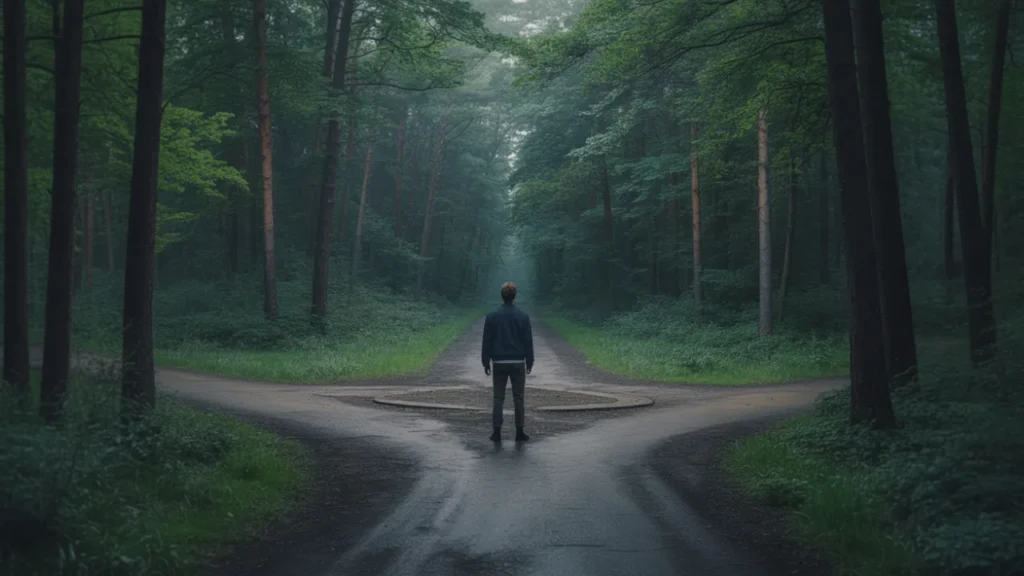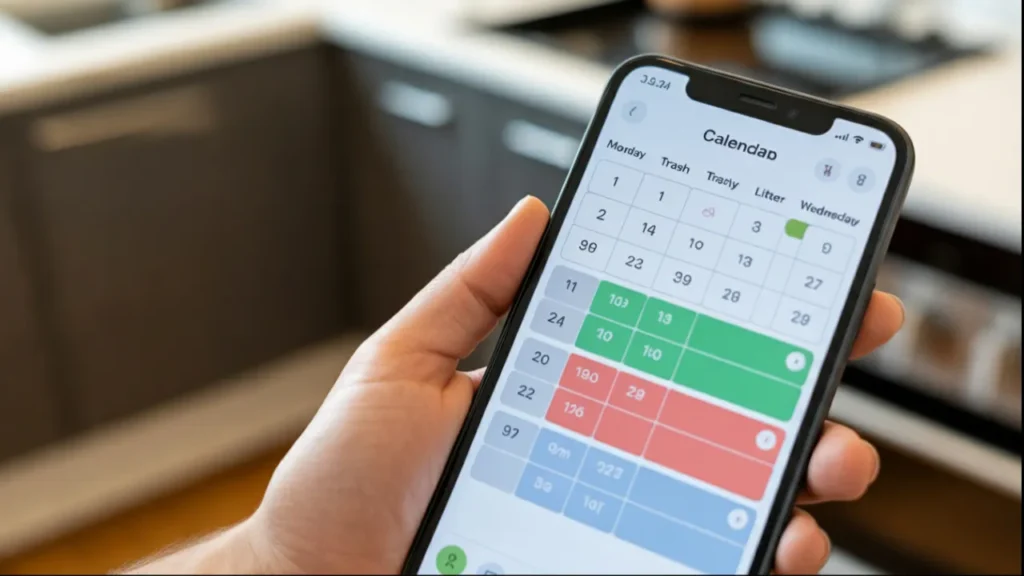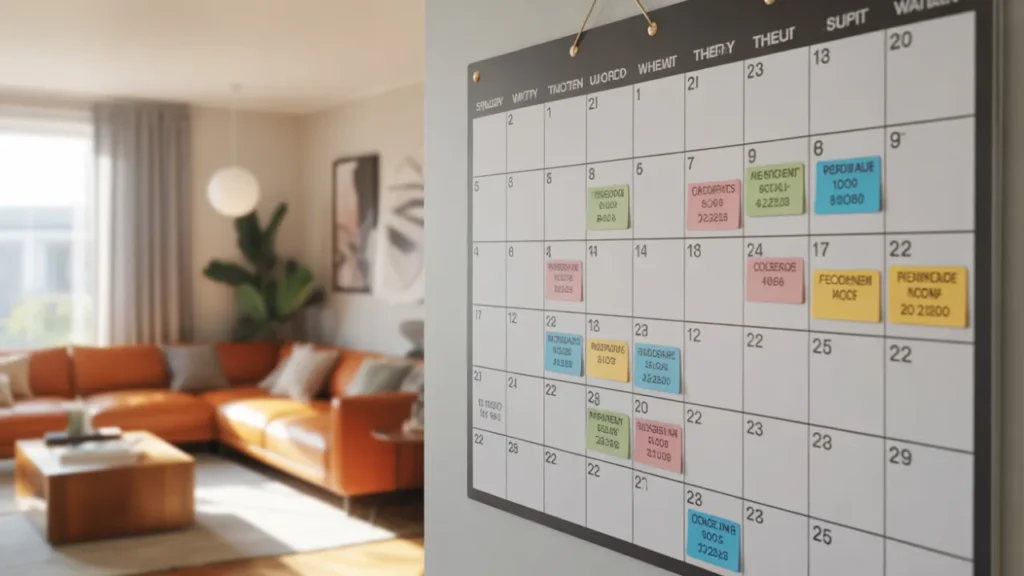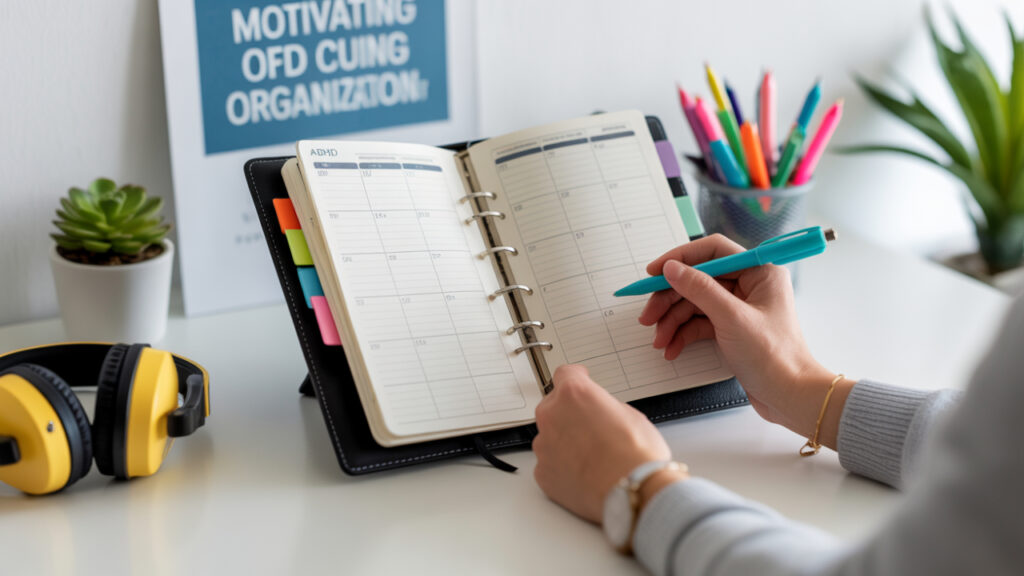ADHD Planner For Adults: Simple Systems That Actually Work
At Revival Mental Health in Orange County, we build real-life planning systems that adults can keep using. This post explains how an adhd planner for adults can improve time management, planning, and follow-through.
What An ADHD Planner Changes For Adult Life
An ADHD planner gives you one trusted tool to capture a schedule and tasks in the same place. You reduce decision fatigue and improve time management with visual blocks. You start to feel more organized day by day.
Planners for people with ADHD work best when they reduce steps. They should show only what matters right now and what comes next. They should also lower effort to start a task.

Why A Planner Helps ADHD Brains Stay Engaged
Clear visual structure eases working memory load. You can scan, pick, and act without hunting for information. Fast wins build motivation and keep you moving.
A flexible planner also protects your attention. You can pause, return, and still know the next step. That safety net keeps productivity from crashing.
Paper, Digital, Or Hybrid: Pick The Format You Will Use
Some adults think best with a pen on paper. Others want reminders and sync across devices. Many do best with a hybrid setup that blends both.
We see success with an adhd digital planner for alarms and recurring events. Pair it with a small paper insert as your adhd daily planner. This mix keeps capture quick and review simple.
Paper Planners: Why Tactile Helps On Busy Days
Writing slows you just enough to plan effectively. The page gives a natural limit, which reduces overfilling your day. You get a sense of progress as you cross off tasks.
Use stickers or highlighters for energy cues. Keep a sticky inbox for new items. Migrate what matters during an evening reset.
Digital Planners And Apps: Alerts, Sync, And Less Friction
A calendar app supports alarms, travel time, and shared events. You can search fast and log repeating routines. An adhd calendar also blocks time to protect focus.
Use voice capture to start planning on the go. Keep notifications tight to avoid noise. Archive old lists so today stays clear.
Hybrid Setups: Best Of Both Worlds Without The Clutter
Let the phone hold your events and alarms. Let the notebook hold today’s plan and notes. Review once daily to sync both sides.
This setup fits different contexts. It also gives you a backup if a device dies. You keep moving with less stress.
Core Features Every ADHD-Friendly Planner Needs
Your system needs fast capture, clear prioritization, and visual time. If it takes more than 60 seconds to use, it will fail. Keep it simple and repeatable.
Make sure it supports a weekly overview and a daily focus. Add space for routines and a short goal list. Add a small parking lot for later ideas.

Visual Time Blocking And Realistic Time Estimates
Block your schedule with start and end times. Add travel and setup buffers. Use half the day for deep work and the rest for admin.
Estimate time for each item. Double it at first to stop overbooking. You will learn what you can do in a day.
Task Capture, Triage, And The Next Action
Dump every idea into an inbox. Triage with three labels: Do, Defer, Delete. Write the next action in plain words you can execute.
Keep a short “Today” list of three to five items. Keep a “This Week” list for everything else. Pull from it during breaks.
Routines, Habit Stacks, And Energy Matching
Bundle steps into a habit stack: meds → water → plan today. Match work to your energy windows. Put heavy tasks during your best hours.
Use cues like location or music to start. Keep the start tiny to reduce friction. Small wins fuel motivation for the next block.
A Simple Daily Page That Gets You Moving
Use one page per day with three zones: Time Blocks, Top 3, and Parking Lot. The layout reduces scanning and speeds decisions. You see the path and step in.
Write your Top 3 first. Drop them into blocks. Fill remaining time with small items and breaks.
The Three-Box Layout For Focus And Momentum
Box 1: Top 3 outcomes. Box 2: Time blocks that protect them. Box 3: Parking Lot for random inputs.
This keeps the day clean. You finish what matters even if surprises hit. You end with a short win review.
A Weekly View That Reduces Overwhelm
A weekly plan stops emergency planning every morning. It shows deadlines, meetings, and energy demands. That context shapes realistic days.
Create a short adhd weekly planner that fits on one sheet. Include anchors like workouts and meals. Include one “could do” list for flexible tasks.

The Two-Hour Friday Reset That Sets Up Your Week
Spend 30 minutes clearing inboxes. Spend 60 minutes shaping next week’s blocks. Spend 30 minutes setting Top 3 outcomes.
You enter Monday with clarity. That reduces anxiety and boosts productivity. You adjust midweek as needed.
Using A Calendar You Will Actually Check
Your adhd calendar holds the hard stops. Your daily page holds the flow. Keep both in sync with a quick nightly review.
Color code by type, not mood. Use few colors so your brain remembers them. Let alarms fire only for what cannot slip.
Color Codes That Actually Mean Something
Use one color for deep work and one for meetings. Use one for personal and one for health. Keep it stable for months.
Your eye learns the map. You see the day at a glance. You move with fewer choices.
Goal Setting That Sticks Without The Jargon
Keep goal setting lean and concrete. Pick one quarterly goal per life area: work, home, health. Write the next two actions under each.
Check progress weekly. Adjust scope based on real time left. Done beats perfect every quarter.
Quarterly Goals In Plain English (And Two Actions)
“Ship resume update” is better than “Advance career.” “Walk 20 minutes daily” beats “Get fit.” Clear words lead to clear steps.
Put the two next actions on your weekly list. Block time for them first. Momentum compounds across weeks.
Make Your Planner A True Productivity Tool
Your adhd planner should lower friction, not raise it. It should help you start the next step fast. It should keep you from overfilling the day.
Review outcomes, not just boxes checked. Ask, “What moved the needle?” Keep feeding the tool with what you learn.
ADHD-Friendly Apps: What To Look For Before You Commit
The best planners for people with ADHD reduce taps and clicks. They make capture instant and review obvious. They play nice with your calendar and email.
An adhd friendly planner app should support recurring routines and templates. It should let you drag blocks and see time. It should work offline when needed.
What Makes An App ADHD-Friendly In Daily Life
It must be fast on your phone. It must make snoozing or deferring a one-tap action. It must show today first by default.
Try alerts that nudge, not nag. Pair it with your paper page for focus. Keep the stack small so you actually use it.
Students And Working Adults: Adjust The Same System
A neurodivergent planner works across roles with small tweaks. Students add class blocks and study sprints. Workers add project outcomes and stakeholder notes.
If you are in school, build an adhd student planner with assignment back-planning. If you are employed, block prep time before meetings. Both versions use the same daily and weekly bones.
Adjusting A Neurodivergent Planner For Campus Or Work
Students: break papers into research, outline, draft, and edit. Put each step on separate days. Add buffer before due dates.
Professionals: define the deliverable before you book time. Add a five-minute debrief after calls. Log next actions while the context is fresh.
Quick Start Checklist You Can Use Today
Clear the desk and open one page. Dump all tasks for two minutes. Circle the three that matter most.
Block time for those three. Add buffers and meals. Leave white space for the unexpected.
Start Planning In 10 Minutes Without Overthinking
Set a timer for five minutes. Build your schedule with only Top 3 and one small chore. Close the planner and begin the first block.
You can add more later. Starting beats perfect. Repeat tomorrow and you will build momentum.
Common Mistakes And Easy Fixes That Keep You Going
Mistake: planning a fantasy week. Fix: halve your list and double estimates. Real time is the boss.
Mistake: too many tools. Fix: keep one calendar and one capture spot. Simplicity wins.
Fixing The Sunday Night Overload Before It Starts
Do a Friday reset so Sunday stays open. Write a quick brain dump and walk away. Your mind will rest because the plan exists.
If anxiety spikes, shorten the plan. Make Monday only about one outcome. Add the rest after lunch.
Keep Momentum With Support And Real Accountability
A planner is a system, not a promise. You may still hit walls with focus or mood. That does not mean the system failed.
Care can help you move again when the plan stalls. Therapy can support motivation, routines, and cue design. Medication can reduce noise so plans land.
When A Planner Is Not Enough To Create Lasting Change
If tasks sit for weeks, get an ADHD evaluation. If your day swings hard with energy, bring that to a clinician. Changes to sleep, stress, or meds may help you act.
This is common and fixable. Support plus structure beats willpower. You deserve tools that fit how your brain works.
How Revival Mental Health Helps Adults Build A Planner That Works
At Revival Mental Health, we help adults use planners to support real change. We pair skills with clinical care when needed so you can act on your plan. You get steady support for planning, time management, and follow-through.
We offer ADD Treatment for Adults, CBT, DBT, and Psychiatry & Medication Management. We also help with goal setting, routine design, and planning templates you can use the same day. Sessions focus on what to do next, not theory.
ADD Treatment And Therapy Options In Orange County
Our Orange County clinics serve Irvine, Newport Beach, Costa Mesa, Laguna Beach, Tustin, and Huntington Beach. We help with evaluation, dose adjustments, and therapy that improves follow-through. Use our insurance verification tool and set a 15-minute consult today.
We also offer telehealth across Orange County. Many clients start with a consult to map next steps. You can start small and build quickly with support.
Choosing And Customizing Your Planner Without The Hype
Pick a format you will open daily. Keep the steps the same each day. Track only what you need to take action.
If you want recommendations, ask us during your consult. We match a neurodivergent planner setup to your routine. We keep the system light so it sticks.
Final Word: Your Planner Is A Skill You Build Over Time
Consistency beats intensity. Ten minutes a day can change your week. Your confidence grows as you keep promises to yourself.
Your adhd planner for adults will evolve as your life changes. Review, adjust, and keep going. That is how you use a system effectively.
Mini Buyer’s Note For Adults Comparing Options
People often search for the best planners for people with adhd. “Best” really means “best for you and your context.” Test one approach for two weeks before you switch.
You can get far with a simple notebook and a synced app. Many find that a hybrid beats either extreme. Keep your stack small so you can execute.
Quick Glossary Of Phrases You May See In Apps
adhd digital planner: a planner you run on your phone or laptop. adhd daily planner: a single-day view you fill each morning. adhd weekly planner: a one-page week map with anchors and goals.
These phrases overlap. Use the pieces that help you act. Drop the rest without guilt.
FAQs
- What is the fastest way to set up an ADHD planner if I am starting from zero? Open one page, list your Top 3, and block time for them. Add one health anchor like a walk or a meal. Run that plan for three days before you add more.
- How do I keep using my planner when motivation drops? Shrink the plan to one outcome and one tiny starter step. Use a cue like coffee or music to trigger the start. Reward completion with five minutes of something you like.
- Should I separate work and personal planning or keep one system? Use one adhd calendar for time blocks, with clear color codes. Keep separate task lists if your roles are very different. Review both during your nightly reset.
- How can Revival Mental Health support my planner routine long term? We coach weekly planning, cue design, and energy mapping. We also offer CBT, DBT, and med management to reduce barriers. You leave each session with a short action list you can do the same day.





